Biodegradable plant pots, commonly called Jiffy pots, are a popular gardening tool to prevent transplant shock and reduce plastic in the garden. Simply plant your seedlings, pot and all, directly into the garden and watch your young plants thrive.
In early spring, greenhouses and heat mats around the country are filled with plant pots sprouting tiny seedlings. When planting time comes, these delicate plants must be lifted from the pots and carefully transplanted into the garden.
If you are tired of storing plastic pots all year long or are looking for an easier and more natural way to start seeds, then Jiffy may be the answer. These biodegradable plant pots are great for starting seeds, seedlings, or even growing young trees. When transplanting time comes, simply plant your vegetables and flowers in the garden, pot and all.
Keep reading to learn all about Jiffy Pots and how to use them successfully in your garden.
What are Jiffy Pots?
Jiffy pots are biodegradable plant pots and can be made out of a variety of materials. Materials may be used on their own or combined with others and commonly include wood fibre, coconut coir, sustainable sphagnum, recycled paper, cow manure, and other compostable material. Instead of removing seedlings from their pots at transplant time (and potentially stressing or damaging the roots), Jiffy pots can be planted directly in the garden. The roots of the young plants will grow through the pot and into the soil beyond as the pot slowly decomposes.
Jiffy pot is a generic term that people often use to refer to all biodegradable pots, but it is actually a brand. Many companies make compostable plant pots (and you can even make your own from newspapers or toilet paper tubes), but Jiffy is the original large-scale producer and the name has stuck.
Using Jiffy Pots in Your Garden
Biodegradable pots are a great way to simplify transplanting seedlings into your garden. You can use them just like you would conventional plastic pots, but Jiffy pots have several advantages, because they:
- Reduce transplant shock
- Cause less damage to plant’s roots
- Improve air circulation in the soil
- Reduce landfill waste
- Mean there is less plastic in the garden
- Are approved for organic production
- Are a great option for kids
Biodegradable pots are perfect for delicate seedlings such as cucumbers, okra, sunflowers, beans, and squash. However, biodegradable pots are also a great choice for any other plants you wish to start in a container.
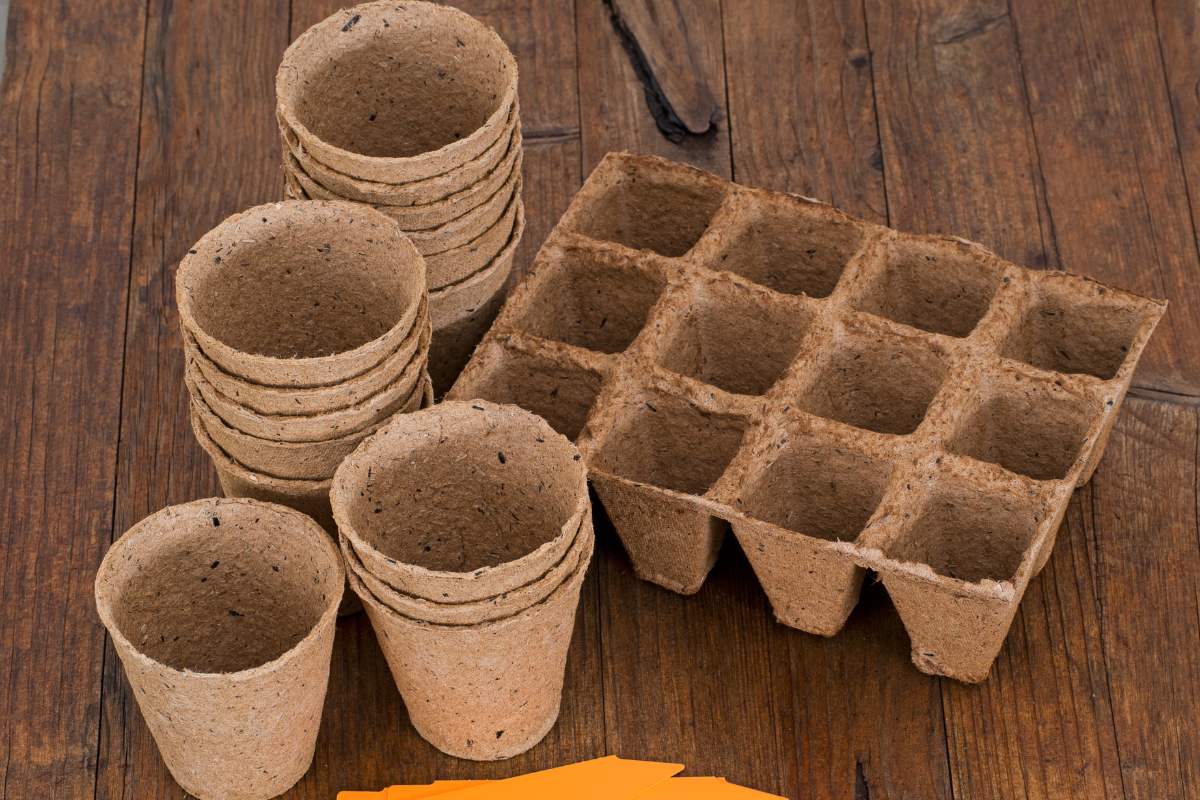 Biodegradable pots and cell trays
Biodegradable pots and cell trays
Choosing the Right Jiffy Pot
Many different companies make biodegradable pots, which means there are many different shapes, sizes, and styles of compostable pots to suit the plants you are growing.
The most common biodegradable pots on the market are:
- Round: Round Jiffy pots are typically 10cm in diameter and are great for growing clusters of sprouts, herbs such as basil, parsley, thyme, etc., or for larger transplants.
- Small Strips: Available in either 6 or 12-cell clusters, small Jiffy pot strips (around 5cm square) work well for starting most seeds indoors. By the time your seedlings have outgrown their pots, they will be ready to transplant into the garden. These strips fit well in standard trays for easy watering and transportation, and can be cut apart to suit your needs.
- Large Strips: Slightly larger than the average strips, large strip pots are 8cm square and are ideal for seedlings that need more space before transplanting.
- Tall Strips: Taller than the average Jiffy pots, tall strips work well for plants with deep-reaching roots.
- Individual Cells: If you only want a few seeds, you can also get individual square Jiffy pots that fit well in a 6 cell punnet for greater flexibility.
- Large Pots: Some companies even make very large biodegradable pots for growing small trees, shrubs, or larger transplants.
Alternatively, you can make your own biodegradable pots out of rolled newspaper, toilet paper tubes, or cardboard egg cartons.
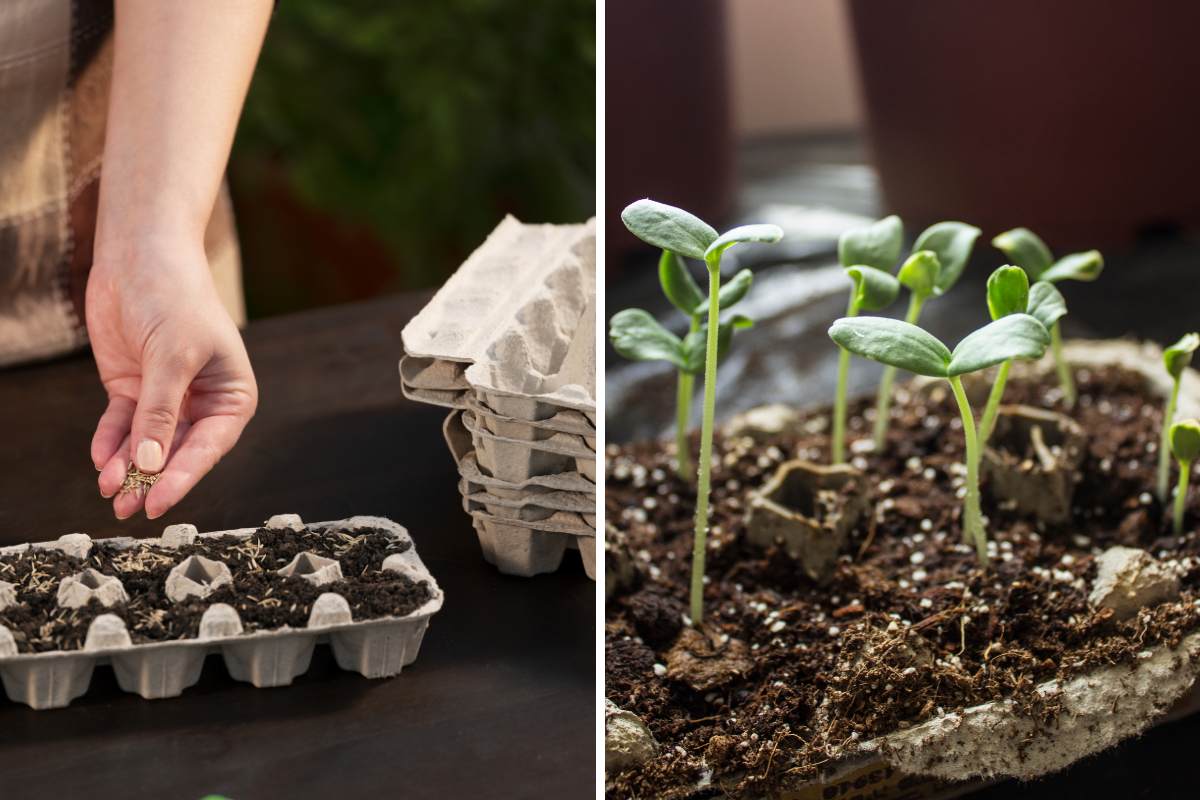 Cardboard egg cartons also make great biodegradable pots
Cardboard egg cartons also make great biodegradable pots
How to Use Biodegradable Pots
Planting biodegradable pots is much like using any other plant pot: you fill them with soil, care for your seeds, and then transplant the seedlings into the garden. However, they require slightly different care than your average plastic pot.
Follow these simple steps to successfully start your garden with biodegradable pots:
Fill the Pots
Fill Jiffy pots with your preferred potting mix, making sure to leave a slight rim above the soil to hold water. Moisten the soil (and the pot) before planting.
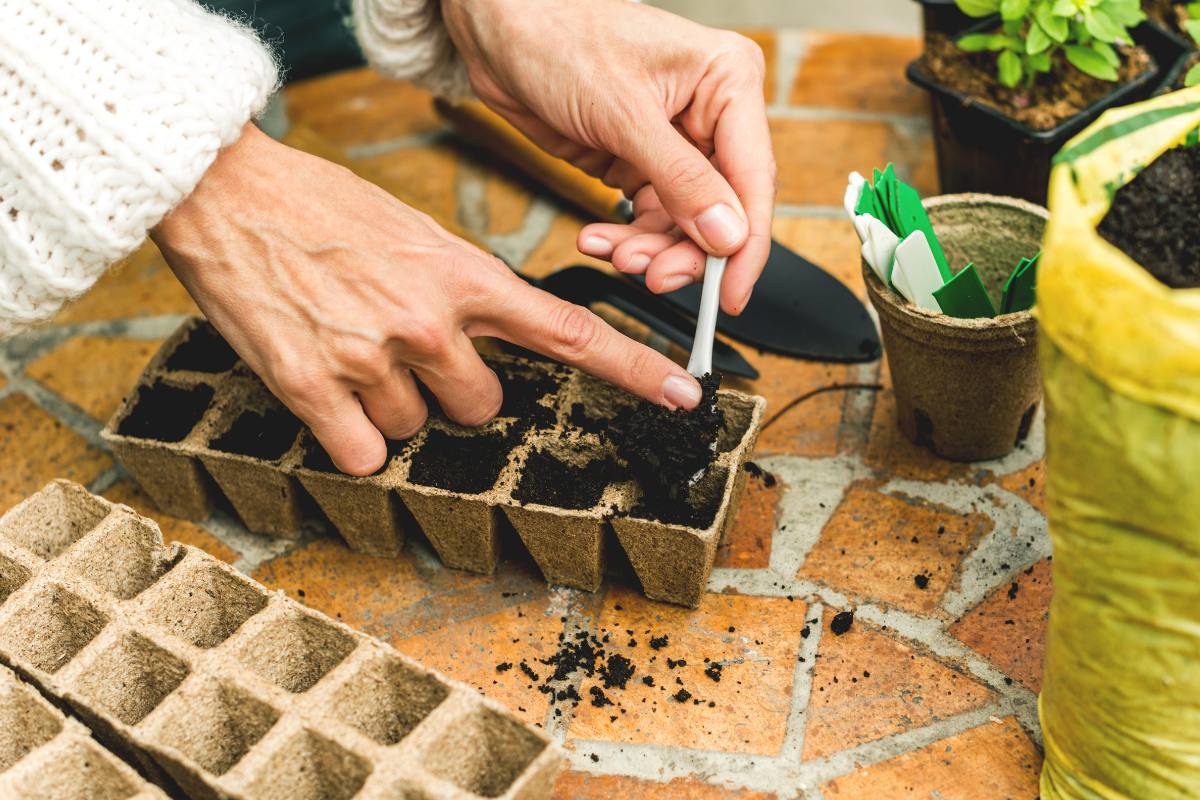 Filling Jiffy pot strips with potting soil
Filling Jiffy pot strips with potting soil
Sow Your Seeds
Plant your seeds as per package directions. Alternatively, you can repot seedling plugs into your prepared jiffy pot. You can write directly on the pot with a permanent marker to indicate the variety you are growing.
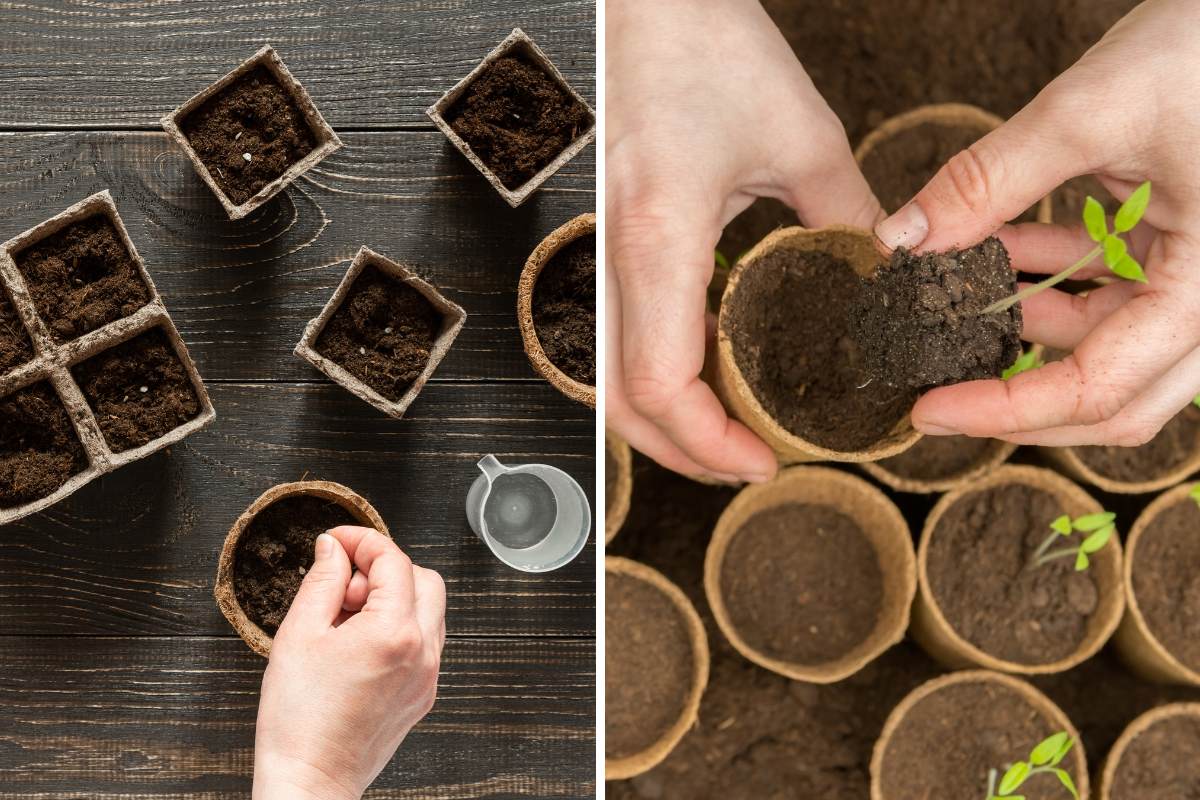 Plant seeds or repot seedling plugs into Jiffy pots
Plant seeds or repot seedling plugs into Jiffy pots
Watering
Watering Jiffy pots is slightly different to plastic pots. For starters, the pots will suck moisture from the soil, so they often need more regular watering. Monitor the soil and keep it evenly moist. If your soil does completely dry out, set the pots in water until the soil is moistened, and then remove the excess water.
On the other hand, do not overcompensate by overwatering. Not only will overwatering lead to poor germination, weak seedlings, damping off, and root rot (just like any other pot), it can also cause the pots themselves to go mouldy or fall apart.
Germination and Seedling Care
Care for your seeds and seedlings as recommended on the seed packet. Jiffy pots work very well with heat mats and grow lights. They also work well indoors, outdoors, and in greenhouses.
Transplanting
This is where Jiffy pots really shine. Once your seedlings are hardened off and acclimatised to the outdoors, they are ready to transplant.
Simply break off the edge of the pot above the soil level (as this will wick water away from the transplant), cut cells apart if needed, and bury the entire pot, plant and all, in the garden so that the soil level in the pot is at the same level as the surrounding soil.
Some sources recommend cutting the sides and bottom of the pot to facilitate root movement. However, this should only be considered on very large pots (since they are typically harder and made to last for several seasons), because doing so could injure the small roots.
Keep your young transplants well watered and the roots will soon push through the decomposing pot and into the soil beyond.
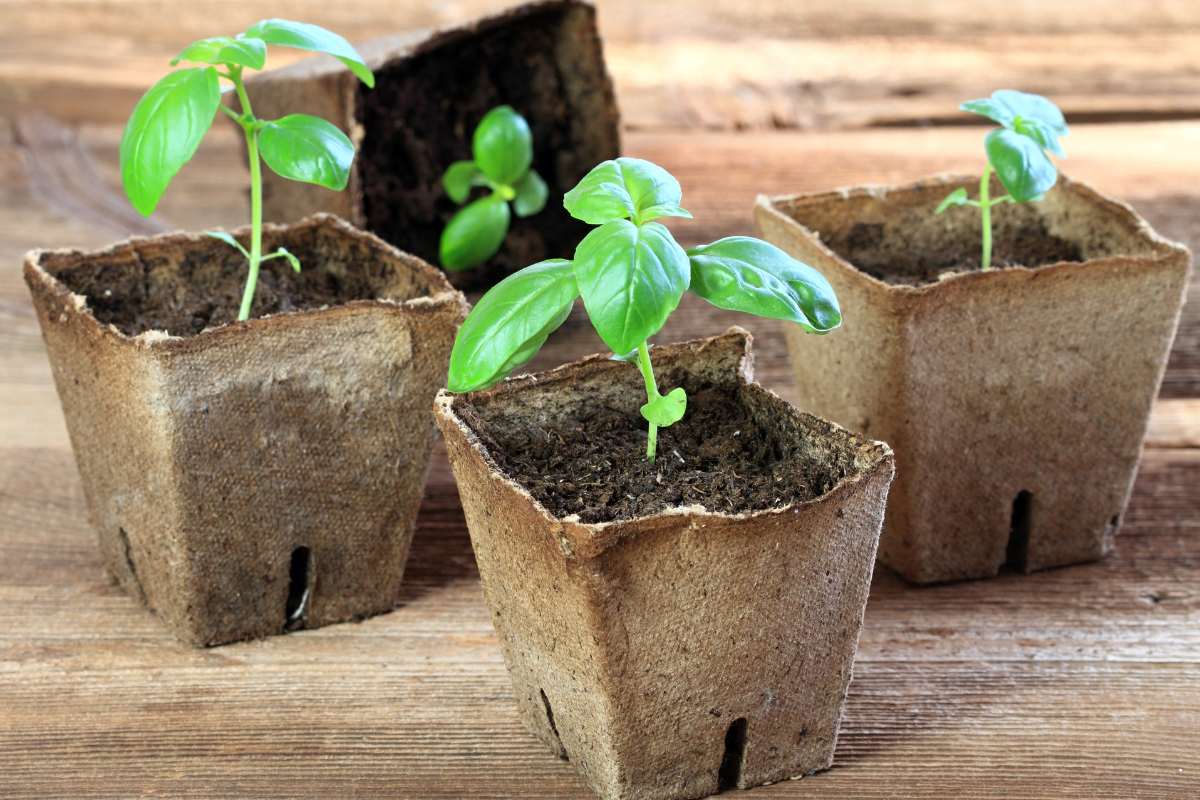 Young basil seedling ready to go into the ground - pot and all
Young basil seedling ready to go into the ground - pot and all
Troubleshooting Jiffy Pots
As with any gardening method, there is no fail-safe miracle cure. Here are some common questions people encounter when growing with Jiffy pots:
- Dry Growing Medium: Since the pots absorb moisture from the soil, some growers find their seeds and seedlings dry out too quickly. Since Jiffy pots are hydrophobic when dry (meaning they repel water) and difficult to rehydrate, your best bet is to monitor the soil and water them as often as needed to keep the soil moist.
- Poor Plant Performance: Many growers say they will never use Jiffy pots again because their seedlings failed to thrive. In many cases, poor performance is caused by overwatering in an attempt to keep the soil moist, and this leads to poor germination, weak seedlings, damping off, root rot, and a plethora of other issues.
- Mouldy and Broken Pots: This is also usually caused by overwatering. With too much moisture, the organic material starts to rot. Sometimes, the pots break down too quickly and the pots fall apart before the seedlings are ready to transplant.
- Pots Not Decomposing in the Soil: The decomposition of Jiffy pots greatly depends on the growing conditions (especially the temperature and moisture level). If you dig up your plants at the end of the year and find the roots still stuck inside the intact pots, this usually means they did not receive enough moisture after planting.
- Root-Bound Seedlings: Like any other pot, seedlings in Jiffy pots will become root-bound if left too long before transplanting. The roots won’t typically penetrate the pot until it has begun decomposing in the soil, so make sure to transplant your seedlings on time.
- Are They Sustainable?: There is a great debate around this issue. While Jiffy pots avoid plastic, and many companies make efforts to source sustainable materials, some biodegradable pots are made in unfavourable working conditions or use non-renewable resources.
- Do Jiffy Pots Hinder Root Growth?: This is another topic of great debate. Some growers claim that biodegradable pots restrict lateral root growth, while many others find it makes little difference to the growth of the plant. Under most growing conditions, most biodegradable pots will decompose, allowing the roots to grow without hindrance and will not affect the overall plant growth.
Transplanting can be a difficult time. After tending your young seedlings for months, you want to get them into the garden where they can thrive, but the transplanting process can be difficult on the little guys. If you want to take some of the stress out of the season, give Jiffy pots a try this year and help get your plants off to a great start.





